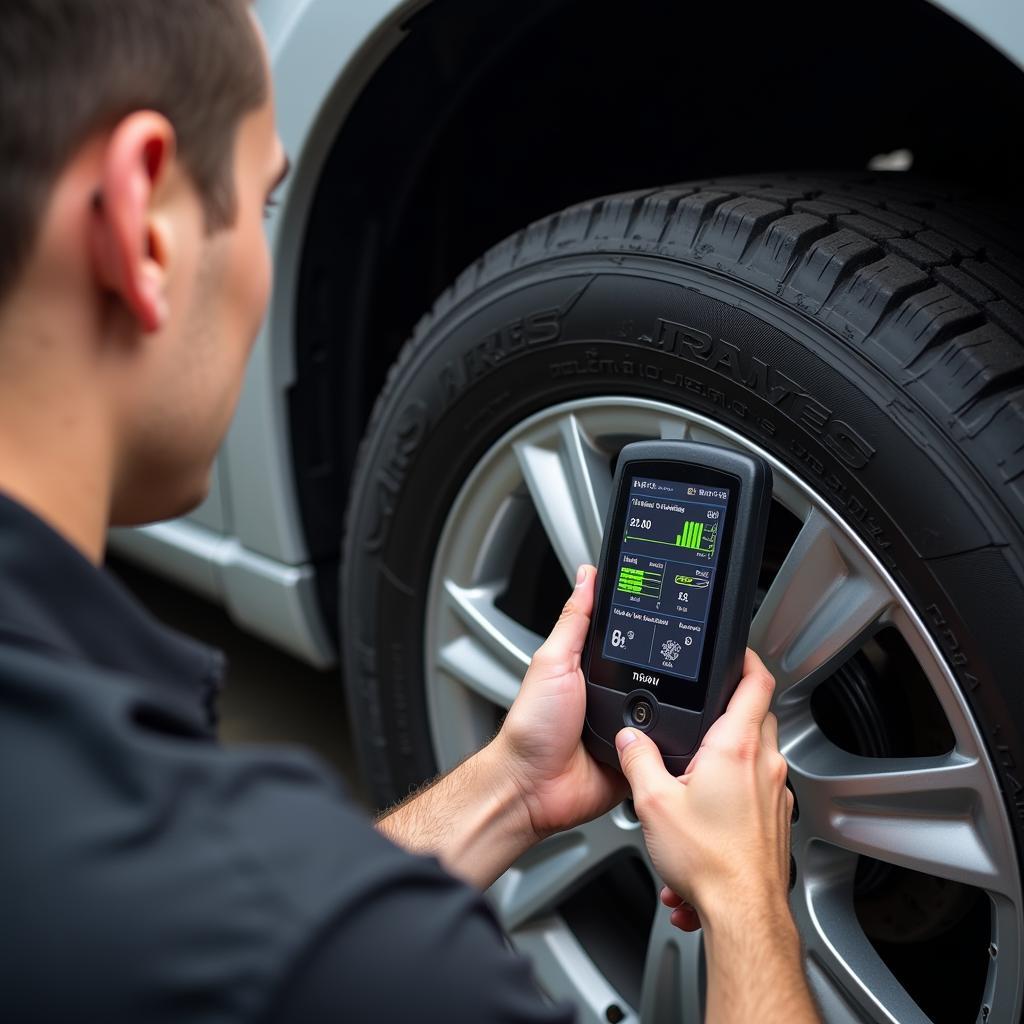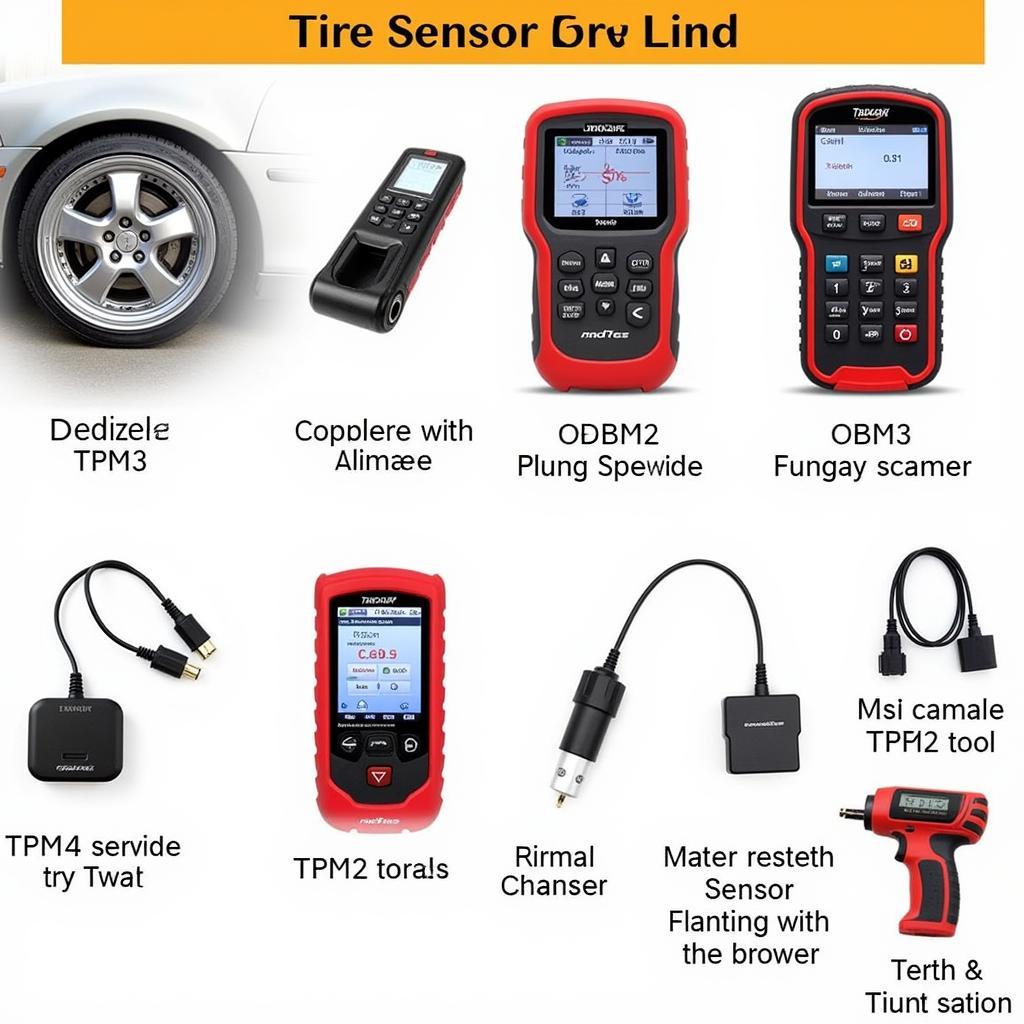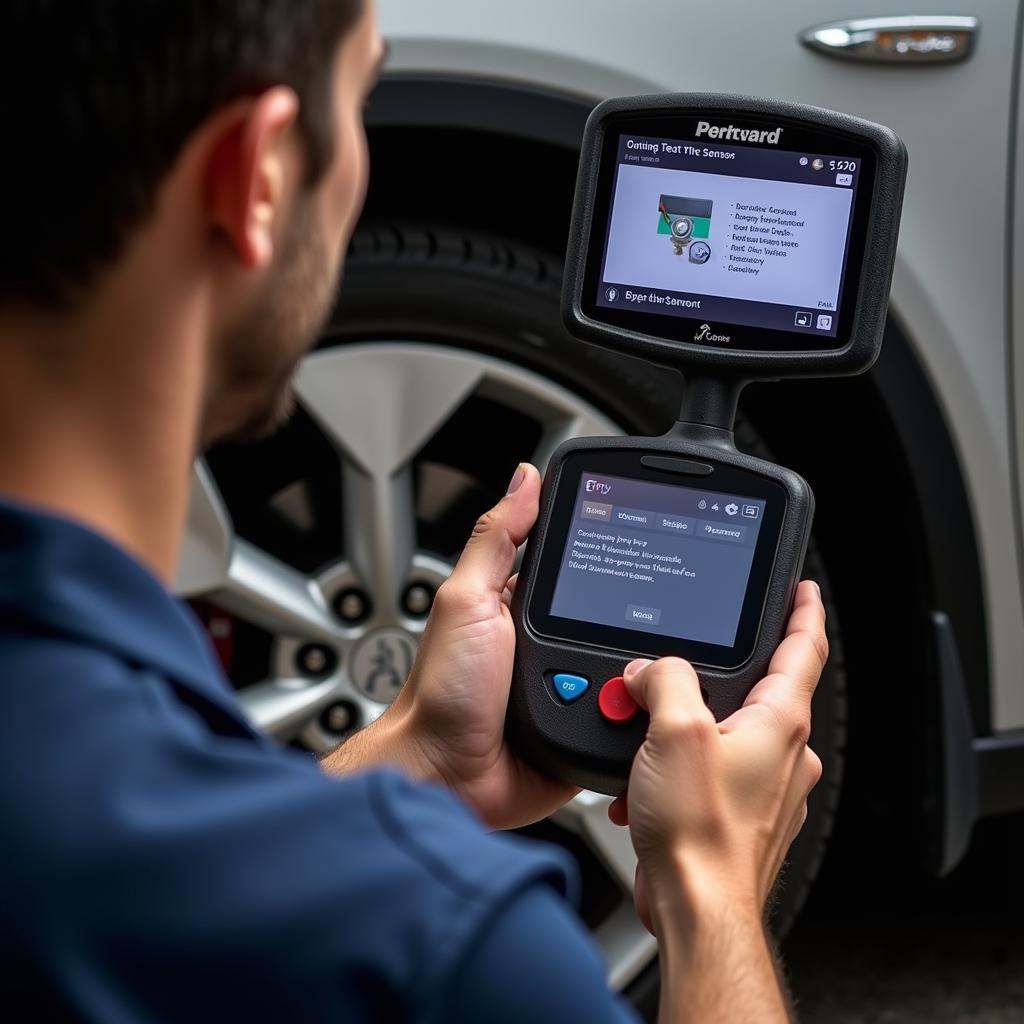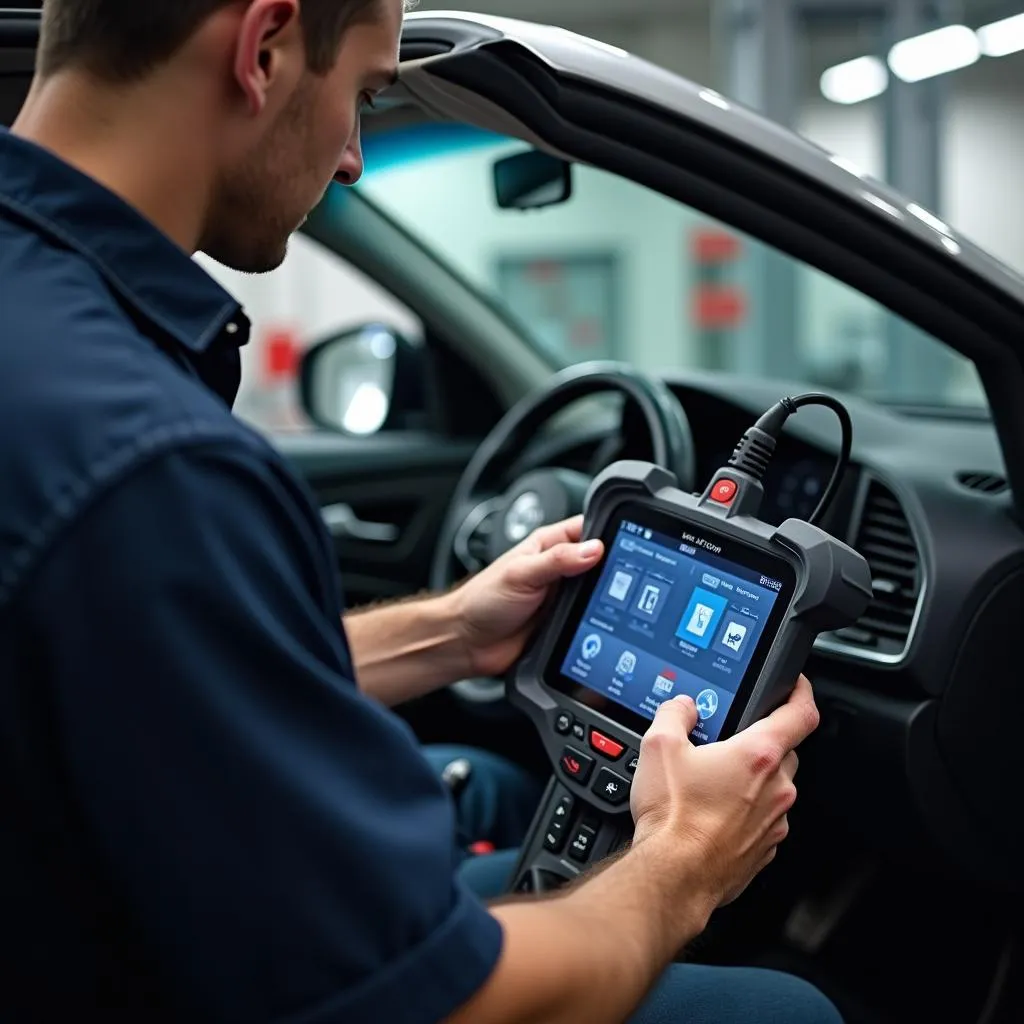A Tire Sensor Scan Tool is a must-have for any car owner or mechanic dealing with tire pressure monitoring systems (TPMS). This guide will delve into the intricacies of these tools, helping you understand their functionality, benefits, and how to choose the right one for your needs.
Understanding Tire Pressure Monitoring Systems (TPMS)
TPMS is a crucial safety feature in modern vehicles, designed to monitor tire pressure and alert drivers to any significant deviations. This system plays a vital role in:
- Enhancing Safety: Maintaining proper tire pressure ensures optimal vehicle handling, braking, and overall safety.
- Improving Fuel Efficiency: Underinflated tires increase rolling resistance, leading to increased fuel consumption. TPMS helps maintain optimal tire pressure, maximizing fuel economy.
- Extending Tire Lifespan: Driving with improperly inflated tires leads to uneven wear and tear, shortening tire life. TPMS helps prevent this by ensuring optimal tire pressure.
How Tire Sensor Scan Tools Work
Tire sensor scan tools are sophisticated devices that communicate with your vehicle’s TPMS, providing valuable information about your tire sensors and overall system health. Here’s a breakdown of their functionality:
- Reading Sensor Data: These tools can read data from your tire pressure sensors, including pressure readings, temperature, sensor ID, and battery status.
- Diagnosing Problems: By retrieving and analyzing sensor data, these tools can pinpoint issues within the TPMS, such as faulty sensors, weak batteries, or system malfunctions.
- Programming New Sensors: Many tire sensor scan tools allow you to program new or replacement sensors, making it easier to get your TPMS up and running after tire changes or sensor replacements.
 Mechanic using a tire sensor scan tool on a car
Mechanic using a tire sensor scan tool on a car
Types of Tire Sensor Scan Tools
There are two main types of tire sensor scan tools available:
- Dedicated TPMS Tools: As the name suggests, these tools are specifically designed for TPMS diagnostics and programming. They offer comprehensive functionality and are ideal for professional mechanics and tire shops.
- OBD2 Scan Tools with TPMS Functionality: Many advanced OBD2 scan tools now include TPMS capabilities. While they might not offer the same depth as dedicated tools, they provide a convenient all-in-one solution for basic TPMS diagnostics.
 A variety of tire sensor scan tools on display
A variety of tire sensor scan tools on display
Benefits of Using a Tire Sensor Scan Tool
Investing in a tire sensor scan tool, whether you’re a car enthusiast or a professional mechanic, offers numerous benefits:
- Accurate Diagnostics: Get precise readings and diagnostic information from your TPMS, allowing for accurate identification of issues.
- Time and Cost Savings: Quickly diagnose and resolve TPMS problems yourself, saving valuable time and potentially costly trips to the mechanic.
- Increased Safety: Ensure your TPMS is functioning correctly, providing peace of mind and ensuring optimal vehicle safety on the road.
- Convenience: Easily program new sensors yourself, eliminating the need for additional trips to the tire shop.
Choosing the Right Tire Sensor Scan Tool
With numerous options available, selecting the right tire sensor scan tool can seem daunting. Consider these factors when making your decision:
- Functionality: Determine the specific features you require, such as sensor programming, data logging, or advanced diagnostics.
- Vehicle Compatibility: Ensure the tool is compatible with your vehicle’s make, model, and year.
- Ease of Use: Opt for a tool with a user-friendly interface and intuitive software for seamless operation.
- Budget: Set a budget and explore tools that offer the best value for your money.
For instance, if you’re looking for a comprehensive gmc sierra scan tool that can handle TPMS diagnostics, it’s crucial to choose one specifically designed for GMC vehicles.
Common TPMS Issues and How to Diagnose Them
Understanding common TPMS issues can help you effectively utilize your tire sensor scan tool:
- Low Tire Pressure: The most common issue, indicated by the TPMS warning light on your dashboard. A tire sensor scan tool can pinpoint the affected tire and provide accurate pressure readings.
- Faulty Sensor: A malfunctioning sensor may send inaccurate data or no data at all. The scan tool can read sensor IDs and diagnose faulty ones.
- Dead Sensor Battery: Tire sensors have batteries with a limited lifespan. A scan tool can display battery status, indicating if a replacement is necessary.
- TPMS Reset Required: After tire rotations or sensor replacements, the TPMS needs to be reset. Some scan tools offer a reset function.
 Using a scan tool to identify a faulty tire sensor
Using a scan tool to identify a faulty tire sensor
Tips for Using a Tire Sensor Scan Tool
- Consult Your Vehicle’s Manual: Refer to your vehicle’s manual for specific instructions on TPMS operation and sensor locations.
- Use the Tool in a Safe Location: Avoid using the tool while driving or in hazardous environments.
- Update the Tool Regularly: Manufacturers often release software updates to improve functionality and compatibility.
Conclusion
A tire sensor scan tool is an invaluable asset for maintaining proper tire pressure, ensuring vehicle safety, and maximizing tire lifespan. By understanding the different types, benefits, and how to use them effectively, you can confidently tackle TPMS issues and keep your vehicle running smoothly. For expert assistance in choosing the right tire sensor scan tool for your needs, contact ScanToolUS at +1 (641) 206-8880 or visit our office at 1615 S Laramie Ave, Cicero, IL 60804, USA.
FAQs
1. Can I program a new tire sensor myself?
Yes, many tire sensor scan tools allow you to program new sensors yourself. However, the process can vary depending on the tool and vehicle make/model.
2. How often should I check my tire pressure?
It’s recommended to check your tire pressure at least once a month and before long trips.
3. What does the TPMS warning light look like?
The TPMS warning light typically resembles an exclamation mark within a horseshoe-shaped symbol.
4. Can I use a whitehat scanning tool for TPMS diagnostics?
While some advanced scan tools might offer limited TPMS functionality, a dedicated TPMS tool or an OBD2 scanner with TPMS capabilities is recommended for comprehensive diagnostics.
5. What should I do if my TPMS light stays on after inflating my tires?
If the light remains on after inflating your tires to the correct pressure, there might be a fault within the TPMS itself. Using a scan tool case relearn procedures might help resolve the issue, or you might need to have the system inspected by a professional.


Pingback: How to Read an OBD Scan Tool: A Comprehensive Guide - Car Scan Tool